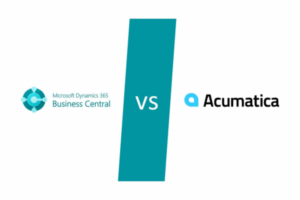The benefits of using subcontractor management software
Subcontractor management software offers a plethora of benefits for businesses of all sizes. One of the key advantages is the ability to centralize and automate various processes, from onboarding new subcontractors to tracking project progress. By digitizing these tasks, you not only save time but also reduce the risk of errors that often accompany manual processes. This increased efficiency allows you to focus on strategic decision-making and project delivery, ultimately enhancing your bottom line.
Furthermore, subcontractor management software provides real-time visibility into project status and subcontractor performance. With access to up-to-date data and analytics, you can make informed decisions on resource allocation, identify potential bottlenecks, and proactively address issues before they escalate. This level of insight empowers you to optimize your operations, drive continuous improvement, and deliver projects on time and within budget.
In addition, the scalability of subcontractor management software ensures that it can grow with your business. Whether you are a small startup or a multinational corporation, this software can adapt to your evolving needs and accommodate an increasing number of projects and subcontractors. This flexibility not only future-proofs your operations but also allows you to scale your business without being hindered by administrative constraints.
Streamlining communication and collaboration with subcontractors
Effective communication and collaboration are essential for successful project execution, especially when working with subcontractors. Subcontractor management software acts as a centralized hub where all stakeholders can easily communicate, share documents, and track progress in real-time. This streamlined communication not only fosters transparency but also ensures that everyone is on the same page regarding project requirements and deadlines.
Moreover, by providing a platform for collaboration, subcontractor management software facilitates efficient decision-making and problem-solving. Instead of relying on disparate communication channels like email or phone calls, all project-related discussions and updates are consolidated in one place. This not only reduces the risk of miscommunication but also promotes a collaborative environment where issues can be addressed promptly and solutions can be implemented swiftly.
Another advantage of streamlined communication is the ability to maintain a comprehensive audit trail of all interactions with subcontractors. This audit trail serves as a valuable reference point for resolving disputes, tracking project changes, and ensuring accountability. By having a documented history of communication and decisions, you can mitigate risks, protect your interests, and uphold the integrity of your projects.
Improving project scheduling and resource allocation
Efficient project scheduling and resource allocation are critical for meeting project deadlines and maximizing resource utilization. Subcontractor management software offers features that enable you to create detailed project schedules, assign tasks to subcontractors, and track progress in real-time. By having a clear overview of project timelines and resource requirements, you can proactively identify any potential delays or resource shortages and take corrective action before they impact project delivery.
Additionally, subcontractor management software allows you to optimize resource allocation by matching subcontractors’ skills and availability with project requirements. This ensures that the right people are assigned to the right tasks at the right time, minimizing idle time and maximizing productivity. With a dynamic view of resource allocation, you can make data-driven decisions to optimize resource utilization, reduce costs, and improve project efficiency.
Moreover, by automating repetitive tasks such as scheduling and resource allocation, subcontractor management software frees up valuable time for project managers to focus on strategic activities. Instead of spending hours manually updating schedules or juggling resource assignments, project managers can leverage the software to streamline these processes and allocate their time to tasks that add greater value to the project.
Enhancing subcontractor performance and accountability
Subcontractor performance plays a crucial role in the success of your projects. Subcontractor management software provides tools to monitor and evaluate subcontractor performance based on predefined KPIs and benchmarks. By tracking key performance indicators such as project delivery time, quality of work, and adherence to safety standards, you can assess subcontractor performance objectively and identify areas for improvement.
Furthermore, subcontractor management software fosters a culture of accountability by establishing clear expectations and performance metrics for subcontractors. By setting performance targets and regularly reviewing progress, you encourage subcontractors to strive for excellence and uphold high standards of work. This accountability not only enhances the quality of work delivered but also builds trust and strengthens relationships with subcontractors.
In addition, subcontractor management software enables you to provide timely feedback to subcontractors based on their performance data. By sharing insights on areas of strength and areas for improvement, you empower subcontractors to enhance their performance and deliver better results on future projects. This feedback loop not only drives continuous improvement but also ensures that subcontractors are aligned with your project goals and expectations.
Ensuring compliance and reducing risks with subcontractor management software
Compliance with regulatory requirements and industry standards is paramount in the construction industry. Subcontractor management software helps you ensure compliance by centralizing documentation, tracking certifications, and monitoring subcontractor adherence to safety protocols. By maintaining a comprehensive record of subcontractor qualifications and certifications, you can demonstrate compliance during audits and inspections, mitigating the risk of non-compliance penalties.
Moreover, subcontractor management software automates compliance checks and alerts you to any expired certifications or non-compliant activities. By receiving real-time notifications on compliance issues, you can take immediate action to rectify non-compliance and prevent potential risks to your projects. This proactive approach to compliance management not only safeguards your projects but also enhances your reputation as a responsible and compliant contractor.
Additionally, subcontractor management software offers robust security features to protect sensitive project data and ensure data privacy compliance. By encrypting data, implementing user access controls, and monitoring data activity, the software safeguards your information from unauthorized access or data breaches. This level of data security not only protects your business but also instills confidence in your clients and stakeholders regarding the confidentiality of project information.
Integrating subcontractor management software with existing systems
While seamless integration can provide an excellent overall experience, construction companies should consider using a construction-specific ERP system. Integrating subcontractor management software with these specialized ERPs is essential for maximizing value. This approach enhances data visibility and operational efficiency, whether you’re using project management software, accounting systems, or other business tools. By integrating these systems, you can eliminate data silos, streamline processes, and ensure data consistency across all platforms.
Furthermore, this integration automates data exchange between systems, reducing manual data entry errors and improving data accuracy. Syncing project data, financial information, and subcontractor details across platforms creates a unified source of truth, enabling better decision-making and reporting. This interconnected ecosystem not only boosts productivity but also provides a comprehensive view of your projects and subcontractors.
Additionally, real-time data synchronization ensures that all systems have access to the most up-to-date information. Eliminating data lags and discrepancies enhances collaboration between teams and stakeholders, leading to faster decision-making and improved project outcomes. This real-time data exchange not only accelerates project delivery but also enhances transparency and accountability across your organization.
Choosing the right subcontractor management software for your business
Selecting the right subcontractor management software is crucial for reaping the full benefits of this technology. When evaluating software solutions, consider factors such as scalability, ease of use, customization options, and customer support. By choosing a software solution that aligns with your business needs and goals, you can maximize ROI, increase operational efficiency, and drive business growth.
Additionally, assess the features and functionalities offered by different software providers to ensure that they meet your specific requirements. Look for software that offers comprehensive subcontractor onboarding capabilities, project management tools, performance tracking metrics, and compliance management features. By selecting a feature-rich software solution, you can address all aspects of subcontractor management within a single platform, eliminating the need for multiple tools and systems.
Furthermore, consider the scalability of the software to accommodate your business growth and evolving needs. Choose a software solution that can scale with your business, whether you are managing a small portfolio of projects or overseeing a large construction program. Scalability ensures that your software investment remains relevant and valuable as your business expands, allowing you to optimize operations and drive efficiency across all project scales.
Implementing and training employees on subcontractor management software
Successful implementation and employee training are key factors in realizing the full potential of subcontractor management software. Develop a comprehensive implementation plan that outlines the deployment process, data migration strategy, and timeline for software adoption. By planning ahead and involving key stakeholders in the implementation process, you can ensure a smooth transition to the new software and minimize disruptions to your operations.
Moreover, provide adequate training to employees on how to use the subcontractor management software effectively. Offer hands-on training sessions, user guides, and tutorials to familiarize employees with the software interface, features, and functionalities. By investing in employee training, you empower your team to leverage the full capabilities of the software, optimize their workflows, and enhance their productivity.
Additionally, establish clear guidelines and best practices for using the software to standardize processes and ensure consistency across your organization. By defining roles, responsibilities, and workflows within the software, you create a structured framework for managing subcontractors and projects. This standardization not only improves operational efficiency but also enables better collaboration and communication among team members.
Final Thoughts
The construction industry is highly dynamic, and efficient subcontractor management is crucial for success. Implementing specialized subcontractor management software can provide the competitive edge needed to streamline operations and enhance project outcomes.
Don’t wait until issues arise—take a proactive approach to managing your subcontractors. Schedule your free discovery call with Alchemy 365 to discover how our construction ERP solution can help you optimize your subcontractor relationships, improve project efficiency, and drive your business forward.





